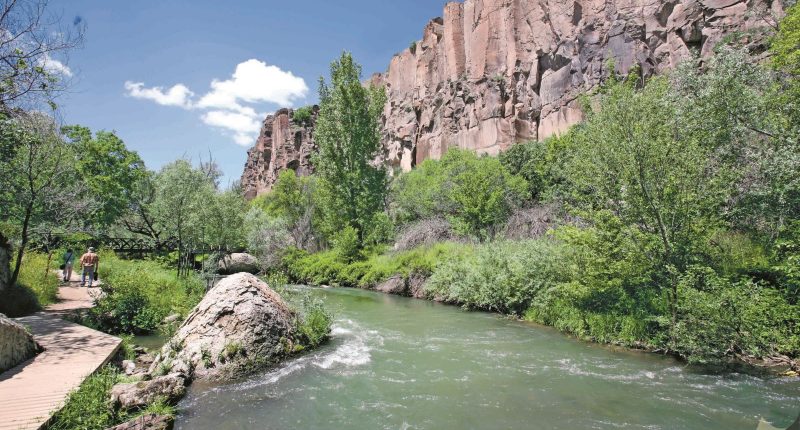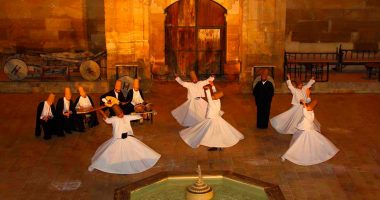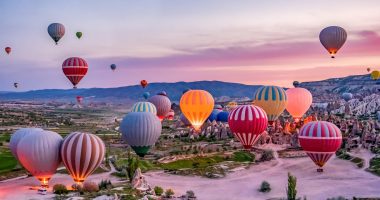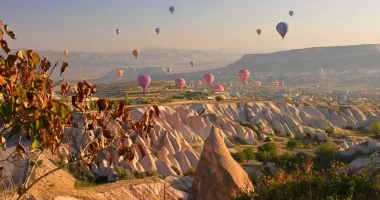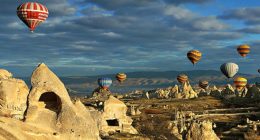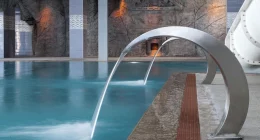Table of Contents
Ihlara Valley, located within the borders of Güzelyurt District of Aksaray Province, has an important place among the canyons in the world. Ihlara Valley, which is one of the most popular destinations in the Cappadocia region and18 kilometers long, 150 meters deep and 200 meters wide, has thousands of living spaces, and unlike other canyons, it is the largest canyon in the world where people lived in the past.
The Melendiz River, which shapes and gives life to the Ihlara Valley, is the main source of life here. Hundreds of churches and rock-carved places created by the easy carving of the rocks surrounding the valley have made the valley one of the most important centers of culture and civilization in the world.
You may be interested: St. Jean’s Church
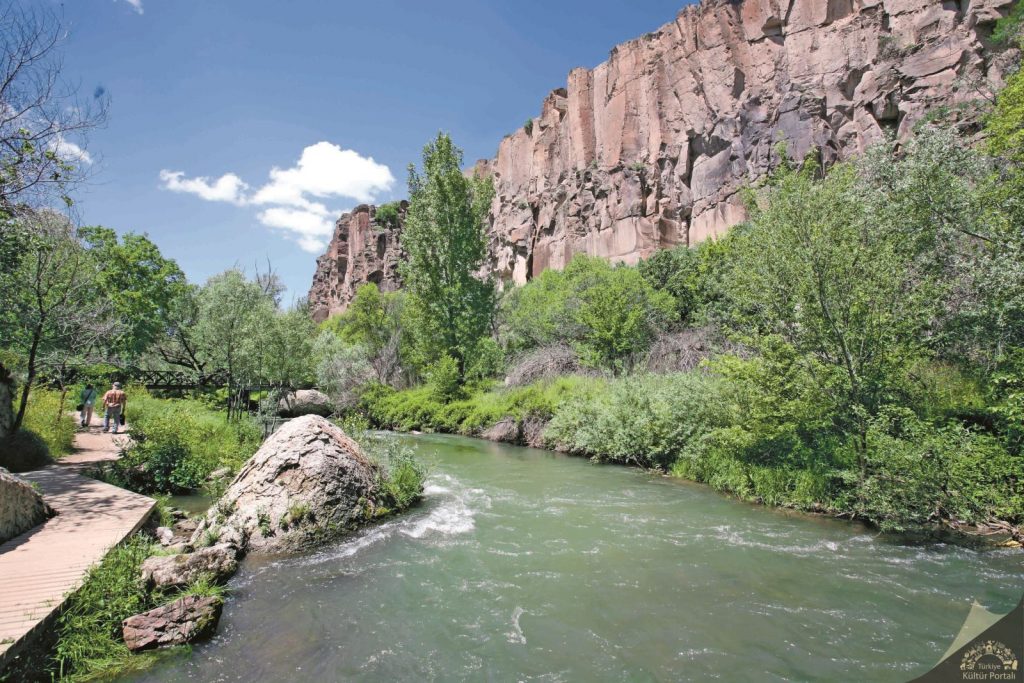
History of Ihlara Valley
Melendiz Stream (Potamus, Kapadukus–Kappadokya River) traverses the 14 km long Ihlara Valley, formerly known as “Peristremma”. Starting from Ihlara Town, the river breaks through the canyon at a depth of 100-120 m from time to time, and turns to the northwest direction to the wide valley where Selime Town, Yaprakhisar and Belisırma Villages are located, and Ziga Thermal Spring, and from there to Salt Lake. The natural formation and sheltered structure of the Ihlara Valley has made it one of the important centers of the Christian religion.
There are many churches in the Ihlara Valley, which has become an important monastery center since the 4th century, with the characteristics of painting art of the period it was built. Churches located in the valley, whose founders are known, have a special importance for the scientific world. Because the exact dating of the churches in the valley is very difficult. Rock-carved churches with closed Greek Cross and free cross plans, single and double naves, take place on the steep slopes of the Valley and integrate with the waters of the Melendiz river flowing in the middle.
Due to its natural structure, the valley has been used as a very suitable retreat by monks and priests since the IV century. The Christian religion began to spread among people who spoke different languages. The low literacy rate and few people’s knowledge of Latin made it difficult for the religion to spread. For this reason, the life of Jesus, the subjects in the Bible, the religious elders and the events related to them were started to be explained with pictures in order to spread the religion.
How Was Ihlara Valley Formed?
It is said that Ihlara Valley was formed by the formation of a different type of rock structure in the region by the lava erupted by Hasan Mountain during the periods when it was an active volcano. It has taken its present form with the effect of the cracks and precipitations formed in the region over time to the Melendiz Stream.
Ihlara Valley, located within the borders of Güzelyurt District of Aksaray Province, has an important place among the canyons in the world. Ihlara Valley, which is one of the most popular destinations in the Cappadocia region and18 kilometers long, 150 meters deep and 200 meters wide, has thousands of living spaces, and unlike other canyons, it is the largest canyon in the world where people lived in the past.
Ihlara Valley Places to Visit
Agacalti Church
It is descended into the canyon with a ladder of 382 steps. At the end of the stairs, there is Agaçaltı Church. The church is also known as Daniel Pantanossa Church because of the painting depicting the prophet Daniel between two lions at the entrance. It is understood from the geometrical decorations uncovered under the spilled frescoes that the church was first decorated in the iconoclastic period. It was later decorated with Ihlara style frescoes.
The painters who decorated the churches in this valley also created their own styles. In the painting style known as the Ihlara style and seen only here, close together scenes are framed in independent groups. The most distinctive difference of Ihlara style from other painting styles is that its colors are vivid and its figures are detailed and moving.
Sumbullu Monastery
The other side of the valley is crossed by wooden bridges. There is also a sign in front of the first bridge showing the location of the churches. You can reach the churches by footpaths. Sümbüllü, Yılanlı and Karagedik Churches are on one side of the valley, while Pürenliseki and Kokar Church are on the other. The Sümbüllü Monastery is reached when you go about 300 meters in the direction of Belisırma through the valley.
The exterior of the two-storey monastery was also carved. The main church of the monastery is on the ground floor. Among the frescoes of the main church is the portrait of Seljuk Sultan Mesud II. This picture is seen as proof that the monasteries in the Ihlara Valley continued their activities after the Turks dominated the region.
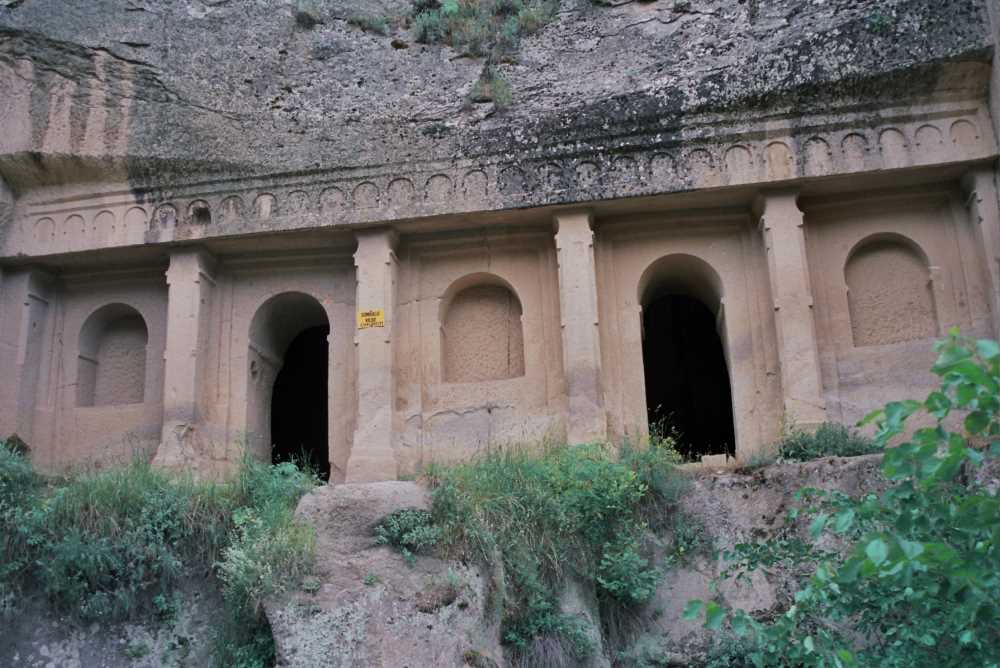
Serpentine Church
On the slope opposite the Sümbüllü Monastery is the Yılanlı Church. Thought to be a women’s convent, the church got its name from a fresco on the west wall of four naked sinful women attacked by snakes. The frescoes of the church made in the Ihlara style are dated to the beginning of the 11th century.
The presence of the devil in the scene of the last supper in the church is attributed to the painter’s influence of the apocryphal (not accepted by the church) Gospels. Such pictures are common in Cappadocia. The scenes of Jesus’ childhood, which is not mentioned much in the Bible, are told based on the apocryphal Gospels.
Pürenli Seki and Kokar Church
When you come back to the bridge and head towards Ihlara town of the valley, you reach Pürenli Seki and Kokar Church, decorated with Ihlara style frescoes. There are other churches such as the Dark Castle Monastery in this vicinity, but they do not have a sign, and it is not possible to find a way with directions in the valley where there are thousands of rock cavities.
Mast Church
In fact, you can go to Belisırma by walking through the valley, but it takes a long time. Moreover, in the spring and winter months, Melendiz can not pass through the paths, so it makes the most sense to go back and drive to Belisırma. As you descend towards Belisırma by car, a sign appears before you; Pillar Church.
This is a two-storey and twelve-room monastery carved into the rocks. It was called the Direkli Church because large columns were built inside the church while it was being carved. Bahattin Samanlığı Church is located 50 meters ahead of Direkli Church. In the frescoes of this church dating to the 10th century, the life of Jesus is depicted with frescoes made in the Ihlara style.
Ala Church
When you return to the main road and descend into the valley, you enter the village of Belisırma. Belisırma village, located in the very center of the valley, has a fascinating atmosphere with its untouched texture. When you cross the bridge over the Melendiz Stream and climb the hill above the village, you come to the slope where the Ala Church is located. Ala Church, the largest and largest church in Ihlara Valley, is also a monastery church. Next to the church is a cloth shop, inside which you can see a stone vice, a pool, a furnace and a large wooden press.
Kirkdamaltı Church
There are two more important churches near Belisırma. The first of these is Kırkdamaltı Church, which was built on the highest point of the Ihlara Valley. An inscription in the church shows the names of Byzantine Emperor Andronikos Paleologos II and Seljuk Sultan Gıyaseddin Mesud II, so it seems that it was illustrated between 1283-98. The donor of the church, Amirarzes Basileos, is pictured with his wife, Thamar, presenting a model of the church to St. Georgios, to whom the building is dedicated.
Karagedik Church
Karagedik Church, on the other hand, is the only wall church in the Ihlara Valley, where there are dozens of churches carved into the rocks. Ziga hot springs between Belisırma and Yaprakhisar are also one of the attraction centers of the region. A few churches and fairy chimneys can be seen in Yaprakhisar and Selime. There is even a 28-room monastery in Selime, known as Selime Castle, which is one of the largest monasteries of Cappadocia. In the cemetery in front of the monastery, there is the Selime Hatun tomb, which is known to be a Seljuk structure.
Ihlara Valley Stairs
Ihlara Valley’s 380-step staircase is as fun to climb as it is to climb it. The stairs, which do not have a very steep structure, can be climbed with small breaks by those who do not have a special breathing problem. The wonderful view that the region offers to its visitors begins to catch the eye on the first staircase. As you go down, the weather conditions in the region change.
Located at the point where the stairs end, Ağaçaltı Church is the center of attention of local and foreign tourists. Special opportunities have also been created for those who want to leave the area without climbing the stairs, leaving their vehicles in the car park in the Belisırma Area.
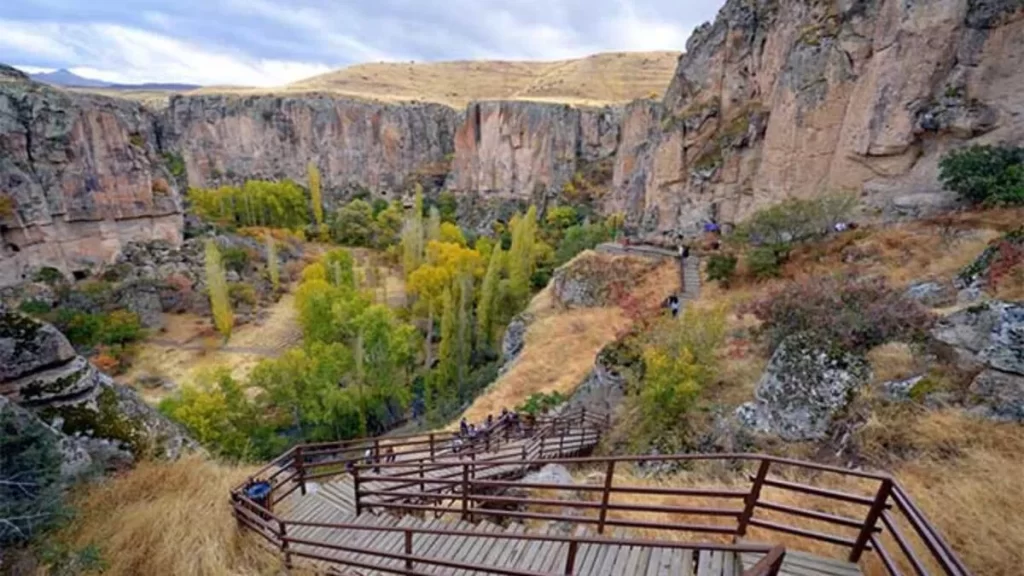
Tips for Those Who Want to Visit Ihlara Valley
You will have to climb a lot of stairs and take long walks. For this reason, it is useful to wear the most comfortable shoes possible. Both historical buildings and natural scenery are beautiful here. Don’t forget to take your camera with you. If you are going in the rainy season, be careful against sudden floods. Don’t forget to check the weather forecast. If you are going for a walk on a hot day, be sure to have a little water with you.
In Which Season Should You Travel?
The ideal seasons for this place are spring and autumn. However, if you do not stay in the midday heat of summer, it is possible to have a very pleasant trip. Especially if you are going to take long walks between 11-16 hours, you should not forget the need for breaks and water.
How Many Hours Will You Need?
The total length of Ihlara Valley is 14 kilometers. However, the touristic part is 4 kilometers long. You have to go down 395 stairs to go down to the riverside. Of course, there is a way out. It takes 3-4 hours just to complete this track completely. Also, if you take a break for about 1 hour in the resting area towards the middle of the track, it takes 5 hours in total.
Where is Ihlara Valley? How To Go?
The region, which is connected to the Güzelyurt district of Aksaray province, took its name from Ihlara Town. The natural beauty, located 40 km from Aksaray, 100 km from Nevşehir and 140 km from Kayseri, manages to make those who want to reach the region by using the land road to taste different excitements at every new step. Guests arriving in Aksaray can reach the region by bus services departing from here.
Tours that leave their passengers in Ihlara Village and then pick them up from Belisırma Village prevent their guests from climbing the stairs again. The pleasant journey that awaits those who want to go to the region via Niğde also provides an idea about the village life of Anatolia.
Note: Click for German dream interpretations
Ihlara Valley Entrance Fee
The entrance fee to Ihlara Valley is 70 TL (4 €) as of 2022 and audio guidance service is provided. Only students under the age of 18 can enter the Ihlara Valley free of charge, which can be entered by paying cash or using a Museum Card. In addition, some bank cards with the Museum Card function give you free tickets when entering this area. The valley, which is open every day of the week, can be visited between 08:30 in the morning and 19:00 in the evening. There are also many campsites offered for free or for a fee along the Ihlara Valley.
